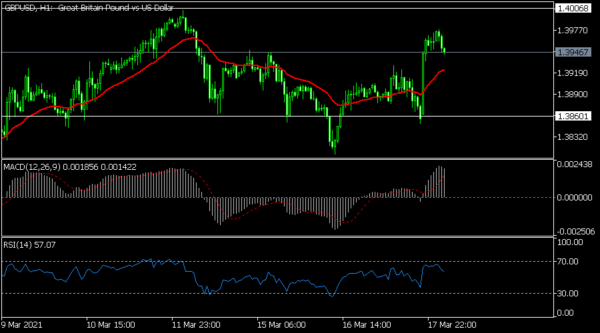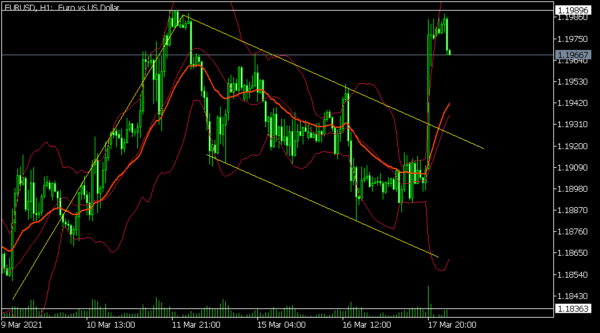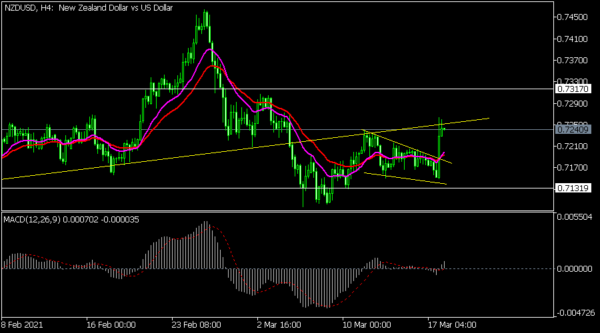The US dollar eased slightly after the Fed delivered its March interest rate decision. The Fed maintained a dovish stance even as it upgraded its economic outlook. It boosted its forecast that the American economy will expand by 6.5% this year mostly because of the vaccine roll-out and recent stimulus. However, the Fed also warned that this recovery will be uneven and projected that a rate increase will come in 2024. It expects the unemployment rate to fall to 4.5% at the end of the year and that inflation will rise to 2.2% this year and cool to 2.0% in 2020.
The New Zealand dollar rose against the US dollar even after relatively weak GDP data. According to the New Zealand Statistics agency, the economy contracted by 1.0% in the fourth quarter after expanding by 13.9% in Q3. This performance was slightly lower than the median estimate of an increase of 0.1%. On a year-to-year basis, the economy contracted by 0.9%, lower than the estimated 0.5%. The annual GDP average declined by 2.9% in the fourth quarter. Still, there are signs that the country’s economy will rebound this year helped by the substantial external demand and local consumption.
The economic calendar will have some key events today. The most notable will be the Bank of England (BOE) interest rate decision that will come in the afternoon session. The bank is expected to leave interest rates unchanged. In Norway, the Norges Bank will also deliver its rate decision that is expected to be relatively hawkish. In Switzerland, the statistics agency will release the latest producer price index (PPI), which is a good measure of inflation. In the United States, the statistics agency will publish the latest initial jobless claims. Economists expect the data to show that more than 700k people filed for initial claims last week.
EUR/USD
The EUR/USD price rose after the FOMC decision. It rose from an intraday low of 1.1881 to 1.1990. Before the decision, the pair had formed a bullish flag pattern that is shown in yellow. Its highest point was along the 38.2% Fibonacci retracement level. The Bollinger Bands have widened while the price is slightly above the 25-day moving average. Therefore, after the current consolidation, the pair may resume the upward trend as bulls target the 50% Fibonacci retracement level at 1.2038.
NZD/USD
The NZD/USD pair rose to an intraday high of 0.7263 after the FOMC decision and weak GDP data. Like the EUR/USD pair, it had also formed a small bullish flag pattern. The highest point was slightly below the ascending trendline that connects the lowest levels from January to early March. It is also slightly above the 25-day EMA while the signal and histogram of the MACD have moved slightly above the neutral line. Therefore, the pair may keep rising, with the next target being at 0.7317.
GBP/USD
The GBP/USD pair rose to 1.3980 after the Fed decision. This was the highest point it has been since March 11 last week. It is also slightly above the moving averages and is between the support and resistance levels at 1.3860 and 1.400, respectively. The signal and main lines of the MACD have also moved above the neutral level while the RSI is slightly below the overbought level. Therefore, the pair may keep rising as bulls target the next key resistance at 1.4000.















